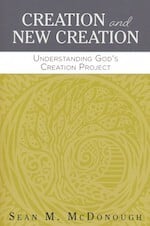Weeds in Our Daily Work
Blog / Produced by The High Calling
As an avid gardener, I’ve often pondered the difference between flowers and weeds. How does one define the term "weed"? Is it a relative designation? What distinguishes a desirable annual or perennial plant from a weed? Most of us tend to think of weeds as plants that grow where they're not wanted or that spring up independently, invading and overwhelming a garden when we leave it to its own devices.
We all know how we feel about the summer annoyance of crab grass or pig weed. And Gospel parables talk about the problem of "tares," weeds which infiltrate wheat fields and have to be separated out from the grain at harvest time.
On a hike in the woods we know enough to watch for poison oak and poison ivy, and avoid them, as we avoid poisonous mushrooms in our diet. But what about plants like clover, which grows wild, without help, yet is recognized as wonderful cattle and sheep fodder?
And day lilies, growing splendid and wild along the verges of highways—prolific enough that I feel no guilt when I dig up and transplant a few into my own garden. Many domestic plants had their origins in the wild—plants like primroses, roses, daisies, and marigolds. I’ve come to realize that there’s a significant overlap between the broad category of “weeds” which grow wild, and domesticated plants—the kind we spend good money on at a nursery.
How drab our world would seem without fields and mountainsides carpeted with wildflowers in spring—multicolored lupines, Indian paintbrush, Texas bluebonnets, California poppies, snowdrops and buttercups, bunchberries, forget-me-nots, edelweiss. All of them, and many others, grow spontaneously, filling the air with fragrance and color. And they’re weeds, every one of them, produced by the wild with a graceful flourish that says: "God made me too!"
As I shift mentally from plants to human beings, I wonder if we sometimes look at other people and subconsciously characterize them as either "flowers" or "weeds." Individuals who are not as bound by the work ethic as we are. Dreamers who make time for being instead of doing, for whom prayer and contemplation are more important than a perfectly orderly home or office?
Do those of us with an imaginative or intuitive bent, the "right-brain"-ers, look askance at the "left-brain"-ers as workaholics, linear thinkers, scorning their patterns of commitment as obsessive? Or do we dismiss as frivolous those adventurers who take what we think of as “unnecessary risks” like mountaineers climbing Mt. Everest, women skiing across the Polar Ice Cap? How do we typify those with less ambition, or success, or social skills than our own? What about artists, whose vocation, the making of art that conveys beauty and meaning, is considered inconsequential, even frivolous, in certain circles?
I'm an omnivorous reader, with a diverse pile of books and journals on my night table—biography, travel, literary fiction, and poetry, memoirs, devotional readings, essays, the Bible. But I'm aware of other believers whose diet is exclusively Holy Scripture (and a few books about the Bible) and whose emphasis is on the life of focused Christian discipline. For them, jokes and cartoons seem frivolous. I need to honor their convictions and hope that they will look kindly on my small indulgences.
I believe God looks down on all of us like an enthusiastic horticulturalist, delighted with the infinite shadings of green in saber-shaped eucalyptus leaves, the splash of apricot made by the Iceland Poppies against the indigo lobelias, the way the tomatoes appreciate the marigolds for keeping away aphids, the way the vinca minor spreads its ground cover, a green blanket starred all over with blue.
I imagine our Creator to be an artist if there ever was one, and yet also a worker who built fertility into the fabric of the world. This artist worker beams with happiness, loving all the varieties of growth and color, wild or tame, and murmuring: "What a magnificent garden I’ve grown. Every plant unique and special. So much contrast! So much variety! How did I do it? I love them all." And so I have to believe that uninterrupted nature, weeds and all, is divine artwork.
There are, of course, weeds that destroy. Remember, in the Jesus-story of the Sower, how some seed was "choked by weeds"? Jimson weed, a poisonous herb, was introduced into North America by a disgruntled employee. The man took revenge on the farmer who had fired him by bringing Jimson seeds from England and scattering them in the farmer's wheat fields, like the story of wheat and tares told by Jesus who said—“an enemy hath done this.”
I have seen this happen in nature when moss, or clover, or crab grass choke out good grass in a front lawn. I’ve seen Scotch broom, an import with showy yellow blooms and a ragged, spiny growth, take over entire hillsides in the Pacific Northwest so that the native plant species are crowded out.
Do others consider me a weed or a flower? More important, how does Jesus view me? Beautiful and cultured, but fragile? Homely but generous and useful?
Jesus said that "by their fruit you will know them." Perhaps that’s the best basis for judgment, pro or con. And even then, such judgment should be considered, measured, gentle, with great gratitude for diversity and beauty, and an appreciation for gifts that differ from our own.
Questions for personal reflection, online discussion, or small groups:
- Think about the people you encounter throughout the day. Do you think of them as weeds or flowers? How might Jesus think of them?
- Are you more imaginative, intuitive, and process-oriented or linear, direct, and product-oriented? How do you view people who approach the world differently than you do?
- For more articles (and poetry!) by Luci Shaw, read God Is in the Office with You and The Greatest Servant Built Bridges.





